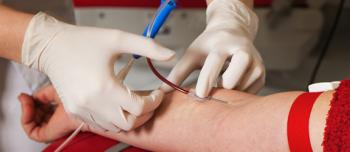AABB News recently reported on updates made to the U.S. Food and Drug Administration’s (FDA) variant Creutzfeldt-Jakob disease (vCJD) Assessment Model. vCJD is the human form of “mad cow disease” (bovine spongiform encephalopathy, BSE). vCJD is characterized by misshapen prion proteins that form spongelike holes in the brain tissue, causing degenerative brain disease, which results in death.
The majority of vCJD cases in humans occurred during an outbreak in the United Kingdom (UK) in the 1990s, when people ate beef contaminated with BSE. There have been 167 confirmed cases of vCJD in the UK; all have died. There is currently no diagnostic test for vCJD; the disease can only be confirmed via a post-mortem brain matter analysis. The virus can lie dormant for years or decades before symptoms appear, making prevalence estimates difficult.
vCJD transmissions via blood transfusions are also a growing concern. There have been five confirmed cases in the UK. The patients contracted the virus through contaminated blood or blood products.
It was previously thought that only individuals with one particular genotype (an individual’s genetic makeup) were predisposed to vCJD infection. Adjustments that FDA has made to the assessment model reveal that other genotypes could increase a person’s susceptibility to vCJD.
Another of these developments came earlier in 2009 when the UK Department of Health reported an incidence of vCJD involving a 70-year-old hemophilia patient, most likely resulting from the transfusion of plasma-derived factor product 11 years earlier.
According to AABB News, there are now approximately 2,700 people with bleeding disorders in the U.S. receiving plasma-derived factor products. While acknowledging that some of these patients might be exposed to a vCJD agent, the likelihood is very low, even for those infusing with large amounts of factor product.
Though recent findings have compelled the FDA to increase estimated annual per-person risk from fivefold to eighteenfold, the agency added that the potential annual risk for these populations may still be as low as 1 in 12 million. Further, the maximum estimated risk remains unchanged at 1 in 12,000. Still, the FDA regards the risk to U.S. patients to be “extremely small.”
“FDA will continue to re-evaluate circumstances for the U.S. on a fairly frequent basis. They are alert and ready to reconsider if new evidence arises,” said Roger Dodd, PhD, chair of AABB’s Transfusion-Transmitted Diseases Committee.
AABB News is the monthly magazine of the group formerly known as the American Association of Blood Banks, an international association representing individuals and institutions involved in activities related to transfusion and cellular therapies, including transplantation medicine. AABB member facilities are responsible for collecting virtually all of the nation’s blood supply and transfusing more than 80 percent of all blood and blood components used in the U.S.





